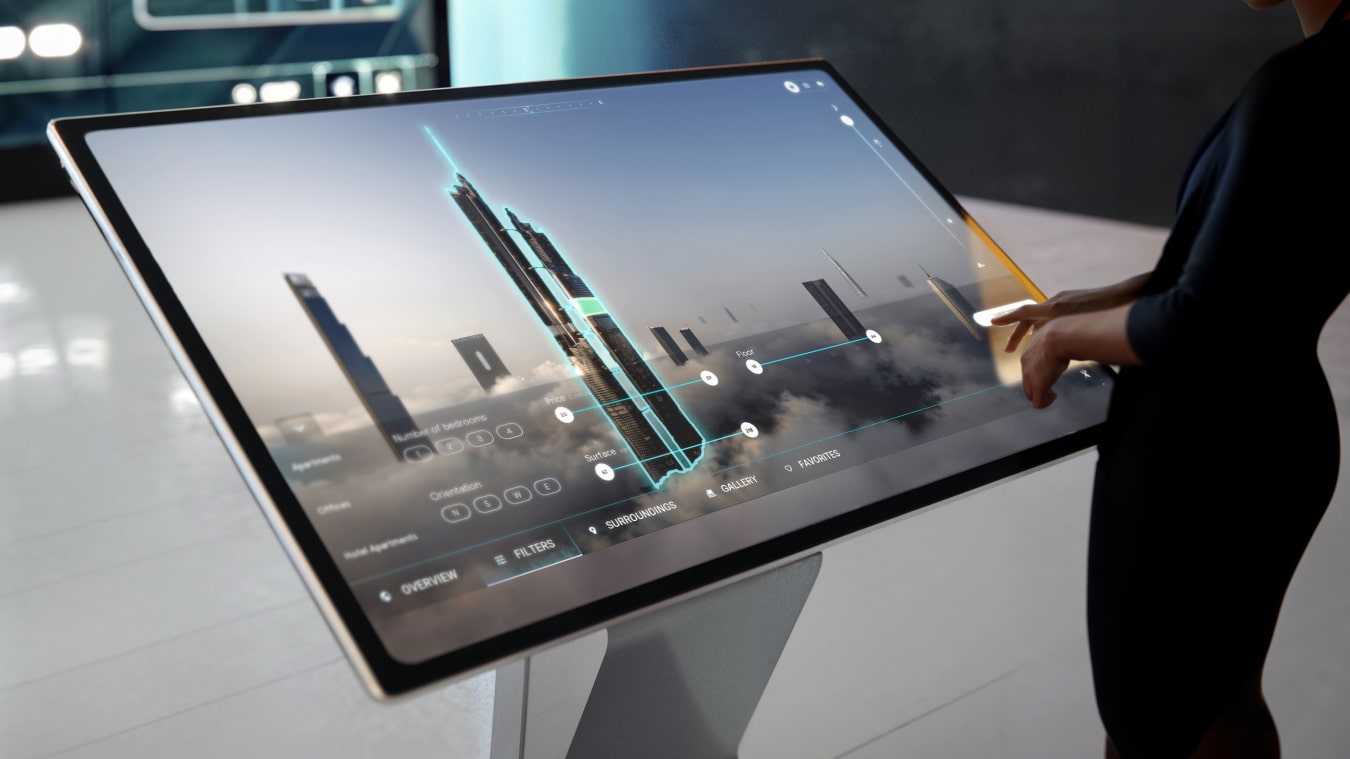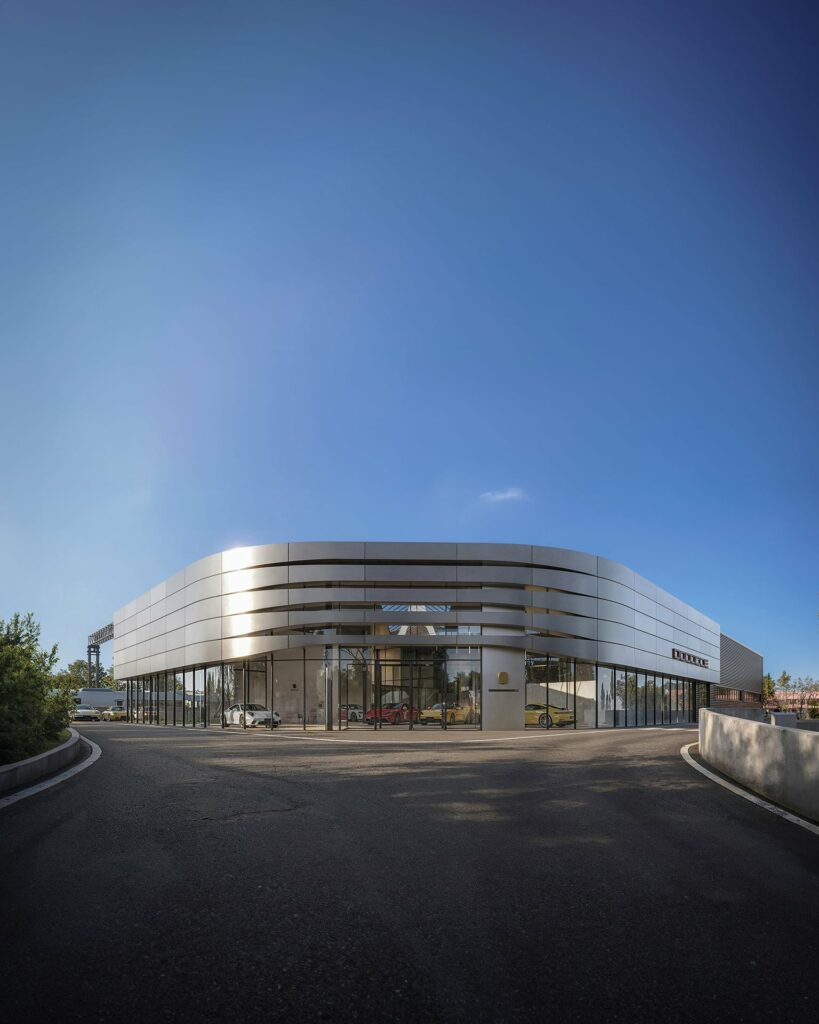Find out how to use architecture rendering to enhance your business. Explore various architecture rendering styles and techniques to give yourself a competitive edge.
Architectural rendering is a useful tool for communication that benefits a project in a variety of ways. For this reason, we will talk about what is architectural rendering, how it is done, and the different kinds of architectural rendering. We will also talk about various styles and a few typical project examples.

Introduction to Architectural Rendering
For architects and other professionals in the building sector, architectural rendering is a very helpful tool. Architectural rendering allows you to visualize the interior and exterior of a structure before it is really constructed, providing a clear representation of the final project.
Imagine how it used to be. People would draw sketches with pencils, and then it got a little more advanced, and they started making models. Now, with the available technology, you can do architectural rendering and help clients understand what they’re getting.
You can use different types of software, or an all-in-one solution to create incredibly realistic visuals and images that help people around you understand what the final result of the project will be.
With architectural rendering, you can easily identify issues with the design in the early phases, and with that, save a lot of money. Also, it’s much more attractive to investors when they see what a beautiful place you’re planning to build.
Understanding Architectural Rendering
In simple words, architectural rendering is when you create visual representations of buildings, i.e. 3d building rendering, or other spaces before they are built. This can include 2D drawings, 3D models, and other visualization things to make the idea more realistic and comprehensible.
This is the purpose of architectural rendering, making things more realistic and easier to understand before any type of construction begins. This will help clients make decisions easier, but also serves as a powerful marketing tool.
Architectural renderings should be regarded as a crucial planning tool that aids communication and visualization in design and construction. They fill the gap between concept and reality, making the design process more efficient and productive.
The 3D Architectural Rendering Process
It offers a new dimension to 2D rendering. To make a 3D architectural rendering means that you have to go into detail and try to visualize an idea. There are 6 steps to create a 3D architectural rendering, and each step is important in making the thing that will help you communicate the idea to your clients:
- Developing the concept: This is the first step, and it involves coming up with a sketch to get the basic idea of the rendering. The more you draw and sketch, the more you outline the scope of the project, the style, and the functionality.
- Modeling in 3D: There’s a lot of software that you can use to make a digital 3D model of a project. The model should have all the elements of the space or object you’re creating, i.e. for a building it should have walls, roof, windows, etc. represented properly.
- Adding texture: When you have all the structural components in place, you can start adding the texture to the 3D model. This means adding things like wood, glass, concrete, and metal to windows, furniture, etc.
- Adding lighting: Adding lighting: Good lighting means that you are making the architectural rendering even more realistic. Almost any good 3D rendering service will use virtual sky and sun or high dynamic range imaging, i.e. HDRI.
- Rendering: You need to use a rendering solution to generate the final image of the idea. This is essentially the final step in the process, all that’s left are the final touches, but it all goes to waste if you don’t have the right machine for this.
- Post-processing: Once the most important things are done, it’s time to polish your architectural rendering. Some tools can help you adjust the color, contrast, brightness, and other effects that are perfect for the presentation.
Types of Architectural 3D Rendering
There are a lot of different types that have different purposes. So, when you’re designing something specific, you’ll use a type of architectural 3D rendering that will give people the most insight into the project.

Static Rendering or Still images
Static rendering involves creating high-quality photorealistic images of architectural projects. These renderings are static, meaning they contain no movement or animation. Due to this, they load faster.
Exterior Rendering
The purpose of exterior rendering is to show the client what the exterior of the building is going to look like. You can suggest the architecture, the materials for different components, and the environment around the building. It’s also called exterior conceptual rendering.
You’ll find it useful for visualizing facades and the integration of the building into the context, i.e. the environment where it’s going to end up being built. This is usually a key part of the client’s presentation.
Interior Rendering
It’s fairly easy to guess the purpose of this type of rendering. It’s to focus on the inside of the building, where you can showcase the furniture, the type of decor, the ideal lighting, and the general layout of the rooms.
This type of rendering is good for projects that are related to interior design, and it’s great for showing how indoor areas work. If you want to show the look and feel of a place, this type of rendering is necessary.
360 Panoramic Tour Rendering
With panoramic rendering, you can achieve impressive 180-degree or even 360-degree panoramic tours that allow users to virtually “travel” through space. Most often, panoramic tours rendering is used for virtual tours and showcasing interiors and exteriors.
Animation Rendering
Animation rendering creates video animations that show movement through space or changes in time.
Animated rendering is actively used for presentations showing the development of an architectural object, as well as life around the object (static architecture + objects of surroundings and stacking, which include people, vehicles, environmental elements, and natural phenomena)
Photomontage or Photo Integration
Photo editing entails merging 3D produced models into actual images. This approach is used to produce very realistic renderings by smoothly integrating digital models into the actual surroundings. Frequently used for large-scale aerial views, when individual 3D buildings or complexes are inserted into drone images.
Interactive Real-Time Rendering
Real-time interactive rendering creates an immersive and engaging experience by allowing clients and stakeholders to explore and engage with architectural designs in real time. This strategy promotes comprehension while allowing for fast feedback and modifications.
Architectural Rendering Demonstration Options
- Virtual Reality (VR): Allows the user to fully immerse themselves in a virtual environment using VR headsets. This provides an interactive and immersive experience as if the user were inside the designed space.
- Augmented Reality (AR): Enables the overlay of 3D models on the real world through the screen of a device such as a smartphone or tablet. Users can see and interact with virtual objects in a real environment.
- Interactive 3D Models: Allow the user to rotate, zoom and pan 3D models in real time in photo-realistic quality to view the project from all sides. Users can dynamically change lighting, building and object configurations, surface finishes, designs, furniture and more. You can also “walk” through 3D space in Walkthrough or Flythrough mode, as if the user were walking through a real building.
Today, interactive 3D models are one of the most impressive, effective and useful marketing and sales tools in the architectural visualization market.
The software from Lunas especially stands out on the market:
- L-TOUCH – interactive real-estate marketing and sales software that allows you to observe an architectural structure at any time of day using a specific button, such as which apartments have the most gorgeous mornings or how the building responds during rainstorms. You may see not only one house, but the entire district. By selecting the “location” tab, you may gain an understanding of the local lifestyle by exploring categories such as medical services, schools, parks, business, retail, and entertainment.
- L-HOUSE – interactive 3D configuration software for single-family housing that allows you to visualize the house in high quality with maximum 3D photorealism. L-HOUSE is intended to involve potential clients in the interactive process of selecting their own residences.
- L-ROOM – space and product configuration software that presents and sells products more effectively. The very productive application displays room objects and interior decorating products in a variety of configurations, furnishing materials, and colors. It is an ideal marketing strategy for producers of furniture and lighting fixtures, décor items, and finishing materials, as well as other associated enterprises.
Architectural Rendering Styles
There are different styles in architectural rendering, and they vary based on the needs of the project. However, architectural rendering styles also depend on the aesthetic preferences. These styles include photorealistic rendering, conceptual rendering and AI creative.
Photorealistic Rendering Style
The photorealistic rendering approach aims to create graphics that resemble genuine pictures. These renderings reach a great degree of detail and realism through the use of exact materials, lighting, and shadows. Architects and designers frequently utilize this approach to show clients how a structure or interior will appear once construction is done.
Photorealistic graphics are as near to reality as possible, allowing clients and investors to readily see the end product.
Such drawings frequently appear impressive and may be utilized in marketing materials, presentations, and advertising campaigns. High-quality drawings help clients trust you since they demonstrate a professional attitude and attention to detail.
Conceptual Rendering Style
The conceptual rendering technique is developing representations that reflect the project’s main idea and feel while avoiding detailed realism. This style is commonly used throughout the early phases of design to debate concepts and styles. Allows architects and designers to swiftly see and express the project’s primary ideas and concepts.
Offers the freedom to experiment with various styles, forms, and spatial solutions. Focuses on developing the project’s overall mood and visuals. It takes less time and effort than photorealistic rendering, making it appropriate for early design stages.
Often used internally by designers and architects. Despite their lack of depth, concept drawings may be incredibly expressive and motivating, communicating the tone and style of the upcoming project.
AI Creative Rendering Style
This rendering technique employs artificial intelligence technology to produce one-of-a-kind, creative, and inventive results. This method blends the strength of machine learning algorithms with the creativity of designers to produce exceptional and inspirational graphics.
It assists architects and designers in discovering fresh, unexpected design concepts and approaches, as well as swiftly creating concept visuals for debate and brainstorming.
However, when professional visualization of a certain design or architecture is required, AI serves as a help rather than a main tool. It is extremely beneficial for producing the most important references for future visualization, determining the best atmosphere for an item, and improving the quality of the final visualization or individual pieces.
Benefits of Architectural Rendering for Businesses
Architectural visualization is vital in today’s industry, particularly in real estate, architecture, construction, and interior design. Visualization not only helps you to display the project in its future shape, but it also offers some key financial benefits. Let’s go over some of the more important benefits:
- Better communication: With 3D renderings for business, all communication is better when you have a visual aid. You can show clients your exact idea, and they can confirm your exact idea. This is also going to improve the communication between all the stakeholders.
- Increased sales and more customers: Architectural renderings allow potential clients to see the end result of a project before it is completed. This greatly increases the likelihood of selling or renting the property. Clients can evaluate all the details of the project, which helps them make an informed decision.
- Improved marketing: We already mentioned presentations that look great, and you can put the architectural rendering in marketing materials, on the website, or your social media profiles. High-quality content can help potential clients come to a decision faster.
- Time and cost-effectiveness: With architectural rendering, you can detect a problem early on, and based on that, you can make further decisions. It will save you money and time, and help you manage the budget for the project more effectively.
- Competitive edge: You’ll stand out in the market because you have high-quality architectural renderings, and this will give you a better reputation. Also, you’ll gain more client confidence and showcase your expertise.
Examples of Architectural Rendering

If you’re a veteran in the construction industry, or you’re somebody working in architecture, you probably know the most common examples of architectural rendering. But, there are some very common ones, and these are:
- Residential buildings and complexes: The most common example of architectural rendering is building and complex rendering, i.e. the exterior and interior views to show clients what they will end up with. The most common example of architectural rendering is building and complex rendering, i.e. the exterior and interior views to show clients what they will end up with.
- Commercial spaces: The next most common thing is for investors where you get a chance to show people what their commercial space will look like, i.e. where their employees will work in the future.
- Commercial real estate: Commercial real estate consists of office buildings, retail malls, stores, restaurants, hotels, and warehouses. Visualization allows investors and renters to examine the layout and design of spaces, which improves marketing and decision-making.
- Urban development planning: Urban development planning includes the development of residential areas, parks, transport infrastructure and public buildings. Visualization helps envision the future appearance of urban spaces, improving planning and project coordination.
- Public infrastructure: Finally, there are the parks, bridges, and other public infrastructure components you can showcase. If there’s a new bridge planned in the city, you’ll see it in the news and there will be a photorealistic rendering of it online.
Integration with Site’s Services
You can integrate architectural rendering services with other offers you have on your website. Make integrations like LUNAS and the existing related blog posts like LUNAS News, which can give your potential clients additional information. By integrating, you’ll get:
- Better communication: As already stated, stakeholders in the project have a clear idea of what’s going on in the background and what the result of the project will be.
- Streamlining: When you integrate the architectural rendering with other services you offer on your website, you offer an all-in-one solution.
- Satisfaction: With a comprehensive all-in-one solution, the potential clients will have the full package at their disposal in one place.
Frequently Asked Questions (FAQ)
How long does it take to render a project?
It depends on how complex your project is. When it’s a very simple rendering, it can take about a few hours. More complex ones are a few days, and very detailed ones are over one day or even a months. It’s all about the details.
What information is needed to start the rendering?
- Architectural Plans and Blueprints: Detailed drawings and specifications of the project, including floor plans, elevations, and sections.
- 3D Models: If available, any existing 3D models of the project.
- Material Specifications: Information on the materials to be used, including textures, colors, and finishes.
- Lighting Details: Specifications of the lighting, both natural and artificial, to be used in the render.
- Environment Context: Details about the surrounding environment, such as landscaping, neighboring buildings, and geographical location.
- Design Preferences: Any specific design elements or styles preferred by the client.
- Perspective Views: Indications of which angles and perspectives need to be rendered.
- Project Timeline: Deadlines and milestones for the rendering process.
- Client Feedback: Initial feedback or reference images from the client to ensure their vision is aligned with the rendering output.
How much does architectural rendering cost?
The cost of a project will actually be affected by several key factors.
- Project complexity: The more complex the project, the higher the cost. For example, rendering a large commercial building will cost more than rendering a small residential building.
- Details: The more detailed rendering required, the more time and effort it will require, which also increases cost.
- Number of angles: Cost may depend on the number of angles and views required.
- Type of visualization: your choice, whether it is static images, animation, 360 tours or interactive real-time, affects the price.
- Urgency: If renderings are required under tight deadlines, this can increase the cost of the project.
- Studio experience and reputation: Studios with more experience and a good reputation may charge more for their services.
Conclusion
Architectural visualization is a strong tool that enables organizations to successfully display their projects, increase relationships with clients and partners, and achieve superior outcomes in a competitive marketplace. Such visualizations allow to clearly and realistically demonstrate the design of a house or apartment before it is brought to life. In other words, 3D renderings allow you to literally look into the future…


